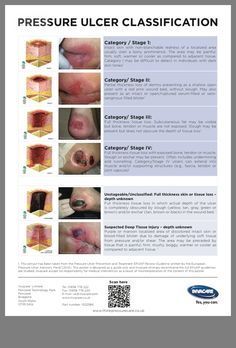A pressure sore is caused by prolonged pressure on the skin. The sore may be small or large, and it can occur anywhere on the body. It can also develop at any age. In some cases, it can be life threatening. Fortunately, there are ways to prevent pressure sores and treat them quickly. Read on to learn more about the causes, symptoms, and treatment options. If you think you may have a sore, consult a healthcare professional for advice.
If you think you may have a pressure sore, it's important to know what to do to prevent it from getting worse. You can start by making sure you don't expose the affected area to excessive pressure. This will prevent the skin from deteriorating. A healthy diet will help the sore heal faster. You should also get enough protein, vitamins, and minerals. A moisturizing cream will also help. Clean the area twice daily and consult with a health care provider if the sore persists or worsens.
If the pressure sore is too deep, you may have a deeper one. These sores are often purple or maroon in color and can extend into deeper layers of skin. They can become infected and require surgical treatment. Your healthcare provider will be able to diagnose whether you have a pressure sore and suggest the best treatment for your condition. If it's an advanced sore, your healthcare provider will perform debridement and other treatments.
Besides treating the sore with medicine, you should follow your doctor's instructions. Changing positions frequently is vital to the healing of a sore. Those in a wheelchair or bed should change positions every 15 minutes. It's also important to clean the sore frequently, as the bed sheet or chair can rub on it. The areas commonly affected by pressure sores are the hips, buttocks, heels, elbows, shoulders, and even the back of the head.
If you notice any changes in your skin, consult your doctor immediately. The wound may be painful and may not heal within 30 minutes. You should stay away from the affected area to prevent infection. You should also make sure that the area is clean and moist. It is extremely important to consume enough calories, vitamins and minerals. The skin must be kept clean. If you suspect an infection, contact your healthcare provider as soon as possible. If the ulcer still does not heal after a day or two, you should seek advice from https://nuffnang.co.th/.

While it is important to know the signs and symptoms of bedsores, they often go away on their own. Until the disease progresses to stage IV, it may be difficult to treat the ulcer. To do this, you should consult your doctor. He or she can give you specific advice. However, you should also monitor your skin for the first few days after the ulcer appears. This is an important step in preventing bedsores.
If there is a bedsore on the skin, it will be difficult to treat. Your healthcare provider will want to know whether you are at risk of infection or whether you need further treatment. You should consult your doctor if the ulcer is in the first or second stage. It is important to know the exact cause and treatment method to avoid the discomfort caused by bedsores.
Signs of a bedsore include a lump, blister, or crater. The ulcer may be red and painful or look like a deep scratch. In some severe cases, the ulcer may disappear completely and you will need to seek medical attention. Once you have determined the type of pressure sore, you should consult your doctor. Treatment may take 2 weeks or more.
Bedsores can be prevented by changing positions frequently. Patients should be repositioned every one to two hours. If the patient is bedridden, the caregiver should carefully examine the skin for signs of redness. If the skin is discolored, the patient should not lie on it. The healthcare provider can then check it for any complications. This will prevent further complications. When an ulcer appears, a medical professional must be present.